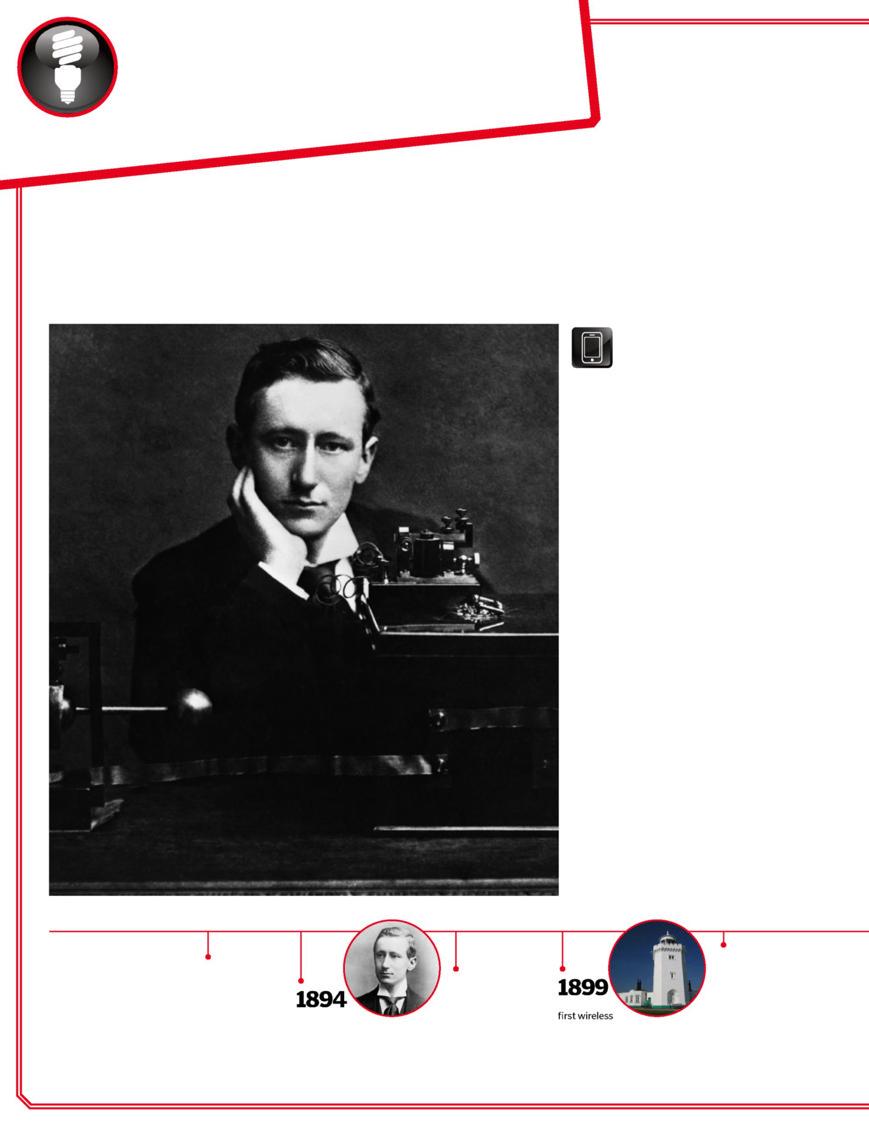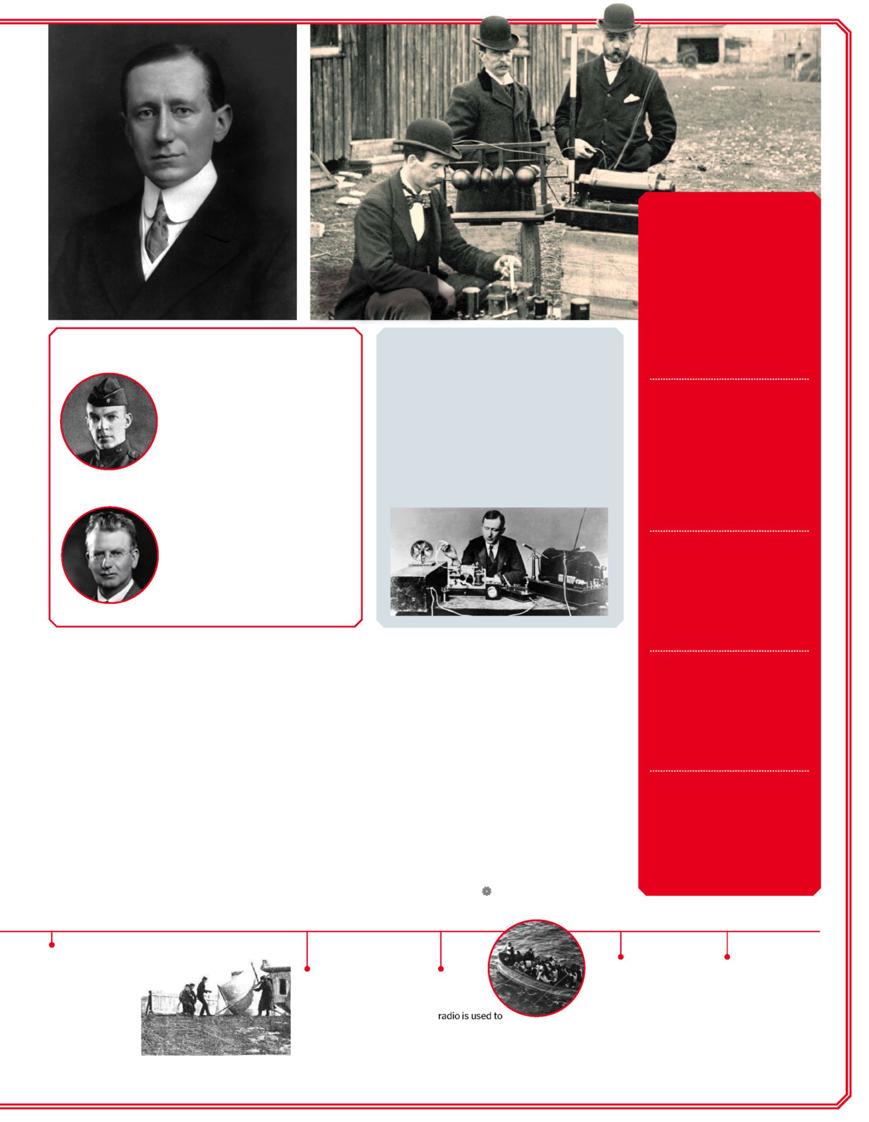
5 minute read
Heroes of Guglielmo Marconi
Heroes of… tecHnology Guglielmo Marconi Sometimes called the father of radio, this resourceful inventor’s practical telegraphy system led to the widespread use of wireless communications
Marconi developed his radio equipment in the attic of his parents’ home in Italy, with the help of his butler, Mignani
Advertisement
Guglielmo Giovanni Maria Marconi was a widely respected Italian inventor who pioneered the development of wireless communication and long-distance radio transmission.
Often credited as the inventor of radio, Marconi was actually an astute businessman who combined, and built upon, the work of other scientists to develop a commercially viable method of long-distance communication.
His interest in electricity and physics began at an early age, and he was inspired by the work of scientists like James Clerk Maxwell, Heinrich Hertz and Nikola Tesla, among others.
In 1894, Marconi read the work of German physicist Hertz, who had developed equipment to send and detect electromagnetic waves over short distances. Marconi saw the potential for transmitting information using radio waves and set about developing a longer-range system to replace wire-based telegraphy.
Marconi began his experiments at his father’s estate and with the help of his butler, Mignani, built equipment in the attic. Soon he could transmit radio waves over short distances, so he moved his experiments outdoors to develop the technology further. He found that increasing the length of the antennas – and arranging them vertically – increased the range of transmission so much that he was able to send and receive signals over distances of around 2.4 kilometres (1.5 miles).
It was at this point that Marconi began to see the potential commercial applications of his experiments. Italy already had a wellestablished telegraph system though, with
A life’s work
Tune in to some of the major events from the lifetime of this astute Italian radio pioneer
1874
Guglielmo Marconi is born in Bologna, Italy, to landowner Giuseppe Marconi and his Scots-Irish wife Annie Jameson.
1894
Begins to develop a method of transmitting telegraph messages without wires, using radio waves.
1896
Travels to London, where he gains the support of engineerin-chief of the Post Office, William Preece.
1899
Sets up the first wireless link between Britain and France from Wimereux, France, to a lighthouse in Dover, England.
1900
Takes out his No 7777 ‘Improvements in Apparatus for Wireless Telegraphy’ patent to protect his technological developments.
Post Offi ce engineers inspect Marconi’s radio equipment before the fi rst-ever transmission of radio signals over the open sea
In their footsteps…
Edwin Armstrong
Captivated by Marconi’s radio technology, Armstrong was a prolifi c inventor and made the regenerative circuit – the fi rst radio amplifi er; it used a positive feedback loop to greatly amplify incoming radio signals. He also invented modern frequency modulation (FM) radio transmission, which enabled much clearer communication.
John Logie Baird
Baird was a pioneer in the development of publicly available television broadcasting, who compiled, tested and modifi ed the work of others to produce a live, moving TV image. He once said of Marconi: “It was he who ventured forth like Columbus and forced upon the attention of the world the existence of a new means of communication.”

The big idea
Marconi combined and modifi ed the inventions of other scientists to develop equipment that could transmit radio waves over great distances. He used a spark-gap transmitter to generate radio frequency electromagnetic waves and a coherer receiver to detect them. A telegraph key enabled him to send radio waves in bursts, generating Morse code. Marconi discovered that the maximum distance of radio wave transmission varied directly according to the square of the height of the transmitting antenna, so tall, vertical antennas were the key.
networks of wires extending across the country, and his applications for funding were dismissed. Undeterred, Marconi travelled to the UK. Britain had a powerful Royal Navy and was the world’s greatest trading empire, and his thinking was that they might have use for his work in maritime communication.
Marconi gained the support of the engineerin-chief of the British Post Offi ce and, with his help, demonstrated his technology to the British government. During his fi rst few years in England he gradually improved the distance of radio transmission – fi rst on land and then over sea. His work excited the international community and stations were set up in France for the fi rst radio crossing of the Channel.
As his technology continued to evolve, ‘Marconi rooms’ were installed in ships, containing a suite of wireless telegraphy equipment which enabled communication with land as well as other vessels. The Marconi room aboard the RMS Titanic and its two Marconi wireless operators transmitted perhaps the most famous radio signals of all time: ‘CQD CQD SOS Titanic position 41.44 N 50.24 W. Require immediate assistance. Come at once. We struck an iceberg. Sinking’.
Marconi died in Rome in 1937 at the age of 63. He was given a state funeral and – as a tribute to his massive contribution to wireless communication – every radio station in the world fell silent for two minutes.
Top 5 facts: Guglielmo Marconi
1Royal connections Marconi installed radio equipment on Queen Victoria’s royal yacht so that she could communicate with the Prince of Wales (Edward VII).
2Educated but unqualifi ed
Marconi had no formal qualifi cations, but had a keen interest in physics. At the request of his mother, he was mentored by physicist Professor Augusto Righi, who introduced him to radio waves.
3Are you ready? The fi rst radio transmission across the open sea was sent over the Bristol Channel and travelled a distance of 6.4 kilometres (four miles). It read ‘Are you ready’.
4High-speed Morse To be employed as a wireless operator by Marconi’s Wireless Telegraph Company you had to be able to send and receive Morse code at a speed of 25 words per minute.
5Lucky escape Marconi was offered free passage on the RMS Titanic, but decided to travel to America three days earlier on the RMS Lusitania because he had paperwork to do.
1901
Successfully transmits the letter ‘S’ in Morse code 3,380km (2,100mi) across the Atlantic Ocean to Newfoundland.
1909
Receives the Nobel Prize in Physics – along with Karl Ferdinand Braun – for their contribution to wireless telegraphy.
1912
Marconi radio is used to save victims of the Titanic, and passes distress signals from the sinking ship to the RMS Carpathia.
1914
Joins the Italian war effort during World War I, where he takes charge of the military’s radio service.
1937
Marconi dies aged 63. He receives a state funeral in Italy and all radio stations hold a two-minute silence in his honour.








